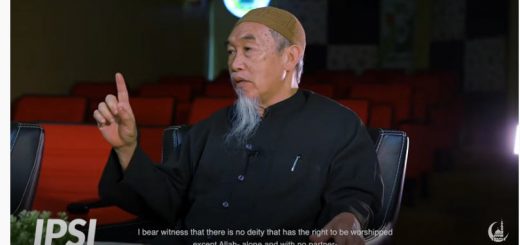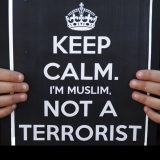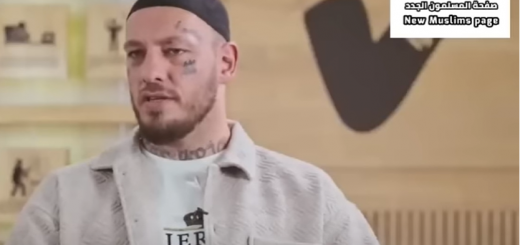dentification and Belonging: A Case Study of White German Women Converts to Islam
Feminist Theology 2021, Vol. 30(1) 104 –119© The Author(s) 2021Article reuse guidelines: sagepub.com/journals-permissionsDOI: 10.1177/09667350211031153
https://journals.sagepub.com/home/fth
Lana Sirri
Maastricht University, The Netherlands
Abstract
This study explores the possibilities of identification and belonging in a socio-religious space that
contains multiple communal boundaries. It is based on narrated accounts of White Christian
German women living in Berlin, Germany, who have converted to Islam. Their shared cultural
background with other White German women, their new Islamic religion, and, for some, their
intermarriage affiliation with Muslims, position these women in a complex relation to the multiple
communities within this space. This intersectional positioning opens up possibilities for constructing,
negotiating and articulating religious, cultural, and gender identification and belonging. This study
aims to investigate how these women construct notions of gender, Islam and Muslimness, and how
they position themselves in relation to communal boundaries of identification and belonging. It
also explores the sense they make of their positionings, and how these are expressed in their daily
lives. To this end, the research describes their encounters in the spheres of the community and the
family. The research aims to contribute to an enhanced understanding of gutes Leben, the human
flourishing, of White German women who have converted to Islam.
Keywords
Identification, belonging, Islam, White, gender, intersectionality, conversion
Introduction
The spread of conversions to Islam, especially in Western countries, is a phenomenon of
the late-twentieth century that continues its rapid growth into the present century, with
women constituting the largest numbers of these new Muslims. Female conversions may
raise strong reactions or objections because traditions often construct women as symbols
of ethnic and religious boundaries. Research interlinking gender and Islam has recognized
the key role women play in the construction and the making of such communal bounda–
ries. Roald (2006) argues that the function of women and their bodies in the marking of
boundaries is particularly evident when dealing with Islam. Female converts to Islam
have fiercer battles to fight because gender issues have been pivotal in the construction of
Otherness between ‘Islam’ and the ‘West’ (Van Nieuwkerk, 2006). This has to be regarded
in view of how Islam is portrayed as a ‘religion hostile to women’ within European media
and discourse. It explains why, as Roald observed, new converts (men and women alike)
tend to defend traditional Muslim gender systems. However, as these new Muslims go
through the various stages of the conversion process, there is a tendency to incorporate
‘Western’ ideals on gender relations into the Islamic framework. Therefore, it is important
to focus on the processes by which a new identity is created. This study sets out to explore
possibilities of identification and belonging in a socio-religious space that contains multi–
ple communal boundaries: White Christian German society and the Muslim community
living in Germany. These boundaries of inclusion and exclusion define and indicate who
can be, and how to be, a Christian or a Muslim, a German or Ausländer (foreigner), in
their different gendered, religious, national and ethnic constitutions.
Despite many unfavourable conditions, ethnic Germans are steadily embracing Islam
by reciting the Islamic creed in the presence of at least two witnesses, declaring their
belief that ‘there is no god but Allah and Muhammad is the messenger of Allah’. Because
this conversion process is so simple and requires no registration, there is no reliable fig-
ure regarding the actual number of new German Muslims. Estimates range from 20,000
to 100,000 (Özyürek, 2010).
When White German women convert to Islam, they enter a new and unfamiliar public
space – the Muslim community – within their own society. Moreover, they enter a new
space without leaving their old space – their country, family, work places and so on – and
now must straddle the two while adjusting to life inside the new space (Badran, 2006).
German converts to Islam find themselves in ambilvalent relations with immigrant
Muslims (Özyürek, 2010). Studies on conversion to Islam in the Christian-majority soci-
eties of Europe and North America highlight the fact that
These converts choose to embrace a minority religion in contexts where Islam and Muslims are
feared, hated, discriminated against, marginalized, and forced to assimilate. Converting to any
minority religion is a difficult process. Converts coming to the minority religion from the
majority religion typically face exclusion from their earlier group affiliations, suspicion from
both the majority and the minority group, and new kinds of discrimination of which they were
previously unaware. But when ethnic Europeans convert to Islam, the stakes are even higher,
because Islam is a persistently and negatively othered religion. The discrimination to which
converts are subject often comes as a surprise to them. (Özyürek, 2010: 173)
The point of departure for this research is the narrated accounts of the everyday lives
of White Christian German women living in Berlin who have converted to Islam. These
accounts highlight the dichotomy of religious/secular, East/West, and Islam/secularity as
these subjects are positioned in the middle of society: between converted Muslims and
born Muslims on one hand, and between German society and converted Muslims on the
other hand. The research encompasses both women who converted before marriage and
106 Feminist Theology 30(1)
women who converted after marrying Muslim men. Hence, it presents cases of intermar-
riage. Defined as marriage among members of different groups, intermarriage has long
been used as a means of studying dynamics of ethnicity, nationality, religion and other
group factors (Price and Zubrzycki, 1962). The intersectional positioning embedded in
intermarriage generates exposure to different and often contradictory discursive systems
and subject-making processes. It is a dichotomy we are well aware of: East/West, reli-
gious/secular, and so on. But, for these women, there is another dichotomy at work – that
between born Muslims and convert Muslims.
This is not to imply that any discourse is fully coherent or free of contradiction.
Rather, it is the assumption of this research that such intersectional positionings open up
possibilities for constructing, negotiating and articulating religious, cultural and gender
identifications and belongings that cannot be easily predicted, defined and constrained
(Bell, 1999; McCall, 2005). Therefore, these positions can potentially challenge, as well
as reaffirm, the communal boundaries in the Christian German space. Furthermore, the
idea that the German women who were interviewed crossed from a Western secular soci-
ety into a religious one is a false presumption.
The focus on religion, in general, in this work emphasizes Wohlrab-Sahr’s (1999)
claim that religion is a means for the public dramatization of problems of social disinte-
gration and distinction, but it also functions as a means of individual problem-solving,
because it re-evaluates the former weak points in the individual biography and replaces
old relations with a new and absolute commitment. The focus on Islam, for White
Christian German women who converted to Islam in particular, is meant
to work out more carefully the implications of ‘German Muslims’, because this touches upon a
broader issue that concerns the normative dimensions involved in the processes of
institutionalizing Islam according to pre-formatted standards of Germanness or Europeanness,
as also apparent in the flourishing notion of a Euro-Islam. (Amir-Moazami, 2011: 12)
In this research, I investigate how these women position themselves in relation to two
different communities: on one hand, the hegemonial White Christian German society;
and on the other hand, the minority Muslim community within that society. I argue that
their identification may rest on locations that are perhaps constructed as contradicting,
which in turn, affect the ways they negotiate their own identities and articulate their
sense of belonging. To be able to comprehend these positionings, one must understand
(a) how do women construct notions of gender and Islam (and Muslimness)? (b) which
meanings do they attribute to their own structural positionings within them? and (c) how
do they position themselves in relation to communal boundaries of identification and
belonging in the context of cultural conflict between Islam and Germany?
It is perhaps evident from these questions that the purpose of this study is not to draw
an ethnographic portrait of convert women living in Berlin or to reveal a particular truth
about their identities. It is rather to learn how meanings are produced and identities are
negotiated in a particular cultural and religious space. What emerges here is a certain
assumption of the irreducibility of lived experiences and their potential to challenge and
advance theoretical and political thought. Therefore, the narrated accounts of the inter-
viewees and their everyday lives become a concrete example, constituting ‘the place
Sirri 107
1. The names of interviewees have been changed in an effort to protect their privacy while
attempting to maintain the type and origin of the name.
where thought happens, where theoretical questions can be raised, elaborated, and
answered’ (Moi, 1999: 302). This is not to imply an instrumental use of people in the
service of theoretical explorations, but rather to suggest a commitment to a theoretical
contribution that is capable of acknowledging these lived experiences and learning from
them (Moraga and Anzaldúa, 1981).
Methodology
This study takes as its key method in-depth interviews, each approximately 90 minutes
long, with five White German women1 living in Berlin, Germany, who converted from
Christianity to Islam. The advantages of this methodology relate to classical symbolic
anthropology and narratology, as it allows for a window to be opened into the worlds of
the interviewees and an in-depth understanding to be developed of lived realities and the
nuances of everyday life. Hence, this was an optimal methodology for the purpose of this
research. It has facilitated a learning process on religious interpretation, negotiation, and
the articulation of identifications and belongings, in concrete contexts of the everyday
lives of the interviewees. On one hand, this method helps to involve the interviewees in
the dynamics of their own narration and reinvolve them, to a certain degree, in the
dynamics of their past experiences through the process of recapitulation (Schütze, 1983).
On the other hand, conversion narratives must be looked at as social scripts that are
highly influenced by the speaker’s desire to be seen as a true convert (Snow and
Machalek, 1984; Taylor, 1976), as well as by the changing ideologies of religious groups
(Beckford, 1978). The principal disadvantage was the limitation of the research to a cer-
tain point in time, thereby preventing the ability to trace developments and changes in
the lives of the interviewees and their processes of identification and belonging before,
during and after conversion. Thus, the time perspective of the in-depth interviews is
limited to the retrospectives of the interviewees themselves.
For this study, I interviewed five German women who had converted to Islam. They
all come from ethnically White Christian families with different degrees of practising
religion. What connects these women is a lack of something in life that they could not
find in Christianity. The rationale behind my reference to the interviewees as belonging
to a same category of ‘converts’ lies in their affiliation to this community. Communities
of converts in Europe are developing on local levels. The emergence of these communi-
ties is visible both in the accounts of the interviewees, and in German-language online
Internet communities, such as islamweb.net.
The structure of this article runs on two axes: the construction and production of mean–
ing and its structural position, mediated by agency. I examine the meanings the women
attribute to their new Islamic religion and how they position themselves in relation to com–
munal boundaries of identity, identification and belonging, and the sense they make of
these in different social and cultural contexts. Finally, I investigate how these women reach
their gutes Leben (human flourishing) within their conflicting and complex realities.
108 Feminist Theology 30(1)
Theoretical Framework
Conversion as Subjectification
Life engages people in a continuous movement through social and cultural groups and
communities, be it a school class or a sports club, a new neighbourhood, or even a new
country. Each community carries particular sets of values, laws, rules and norms of
behaviour, drawing its own territorial and/or social-cultural boundaries and dictating
who can and cannot participate and belong (Bell, 1999; Eckert and McConnell-Ginet,
1995). Different religious and social forms of communal life require particular atten–
tion and call for a separate discussion: the family, the township, the online community,
the nation state and the transnational world. Each form entails its own world of cultural
meanings, power or knowledge systems, scholarship and theoretical frameworks cre–
ated in the course of their analysis. The overlaps and intersections between these forms
in themselves constitute a focus of contemporary social and cultural research, which
explores the multiple relations between the family and the nation state; the subcultural
groups and transnational technologies of communication; rural communities; and
transnational economic institutions. Participation in these multiple contexts can be
complicated and contradictory: values of the family may contradict the laws and rules
of the new religion, while the practices of the community or the subculture may under–
mine the norms of society at large. The family itself is likely to experience internal
struggles or tensions with values and norms, as is the community and the nation state.
In this context, boundaries of religion and identity serve a dual role of inclusion and
exclusion: factors and practices of participating and belonging in one collective may
signify strangeness and exclusion from the other. The regulative task of reproducing
and redrawing these boundaries may take different forms on the complex axis of the
forced and voluntary, and may involve different sanctions for violation and noncompli–
ance. Newcomers actively engage in this process and may respond to it by cooperation
and complicity, resistance or subversion. To grasp the multifaceted nature of these
relations, Ong (1996) turns to Foucault and explains the term subjectification as ‘self-
making and being made by power relations that produce consent through schemes of
surveillance, discipline, control and administration’ (p. 737). Conversion involves
intensive processes of subjectification and remaking of the self. As such, it profoundly
transforms the everyday life experience of the subject – from learning a new language
and encountering new cultures to becoming subjected to a new religious system that
one may not have encountered before.
Rather than simply understanding identification as something that has already taken
place in the formation of subjectivity, we can consider how identifications perpetually
fail to grasp ‘others’ in social encounters. That is, subjects assume images that they can–
not fully be, but the images they assume are already differentiated; subjects and others
become differentiated at the very same moment that they are constituted as such
(Ahmed, 2000).
Conversion involves a powerful experience of strangeness, whereupon the convert
subject is reconstituted as a stranger. Badran (2006) asserts that
Sirri 109
2. The term ‘Muslima’ refers to the female Muslim person – the one who submits to God and
positions herself as a believing and practicing Muslim. I apply Lamptey’s (2014: 8) defini-
tion of the term that includes the Muslima’s individual experience as a woman, not only as an
experiential positioning but also theoretically.
native-European or Western converts are also foreignized to a degree by their conversion to
Islam. It is important to bear in mind, then, that the terms Muslim and Muslima2 are thus not
simply religious markers but mark the foreign in countries of the West. (p. 199)
Therefore, one must not overlook the context of the religious and cultural forms of sub-
jectification in which the convert comes into being. Indeed, taking the temporal per-
formative nature of identities as a theoretical premise means that, more than ever, one
needs to question how identities continue to be produced, embodied and performed
effectively, passionately, and with social and political consequences (Bell, 1999).
The process of subjectification for ‘German Muslims’ in Germany, a religio-social
space of intricate boundaries of identity, can be understood as the making and remaking of
self in direct relation to the subject positions of this religio-social entity, or these entities, in
their political, social, cultural and other formations. The theoretical work on religion mak–
ing and politics of identity emphasizes the production of German and Muslim identities as
mutually exclusive and the questions of identification and belonging for ‘German Muslims’
in Germany in light of the intimate connection between identification and conversion.
Religion Making and Politics of Identity
‘Religion making’ is broadly conceived as the way in which certain social phenomena are
configured and reconfigured within the matrix of a world religion, or world religions, dis–
course. The notion refers to the reification and institutionalization of certain ideas, social
formations and practices as ‘religious’ in the conventional Western meaning of the term,
thereby subordinating them to a particular knowledge regime of religion and its political,
cultural, philosophical and historical interventions. In some localities, being religious, or
practising or engaging in what has been deemed ‘religious’, as Masuzawa (2005) has put it
more concretely, may be related to the question of personal and group identity in a way
altogether different from the one usually assumed (i.e. assumed on the basis of the Western
European denominational history of recent centuries). For that matter, religion and identity
may not relate at all in some cases. Masuzawa (2005) stresses the fact that
The so-called great religions of the world are often arranged by means of one or the other of
various systems of classification, with binary, tripartite, or even more multifarious divisions.
What these systems do, regardless of the variation, is to distinguish the West from the rest, even
though the distinction is usually effected in more complicated ways than the still frequently
used, easy language of ‘East and West’ suggests. The demarcation, in any event, is articulated
from the point of view of the European West, which is in all known cases historically aligned
or conflated. Though not without some ambiguity, with Christendom. (p. 3)
In ‘The Age of the World Picture’, Heidegger notes that, through this mode of self-
relation, man places imagination at the centre of the world. What Heidegger alludes to is
110 Feminist Theology 30(1)
that this particular modern form of thinking gradually produces the birth of the West as a
self-referential system of thought, universalizing its position and discourse, while claim-
ing objectivity about human societies and cultures on the same basis as the natural sci-
ences. Through the work of this imaginary, which projects itself as a universal structure
of human consciousness – the self-representing subject – not only does Europe become
the West and thought Western. In the very same process, ‘religion becomes secularity’
(Dressler and Mandair, 2011). Jakobsen and Pellegrini (2008) claim that ‘the choice
between secularism and religion represents a false dichotomy. This is so because reli-
gious and secular formations are profoundly intertwined with each other’ (p. 11).
The political reality forces us, paraphrasing Talal Asad (1993), to think about the
conditions in which the dichotomies between ‘the religious’ and ‘the secular’ seem to
make sense in so many public discourses. Such inquiry needs to ask questions about
political and epistemological hegemony: ‘How, when, and by whom are the categories of
religion and the secular defined? What assumptions are presupposed in the acts that
define them?’ (Dressler and Mandair, 2011: 20). As a result, the easy presumption that
secularism is necessarily more rational, more modern, freer and less dangerous than
religion is not sustainable.
Eagleton (1989) argues that
[a]ny body of theory concerned with human meaning, value, language, feeling, and experience
will inevitably engage with broader, deeper beliefs about the nature of human individuals, and
societies, problems of power and sexuality, interpretations of past history, versions of the
present, and hopes for the future. (p. 15, cited in McCutcheon, 1997: 195)
The study of religion constitutes one such body of historically grounded theory
(McCutcheon, 1997).
In her work, Auga (2013) claims that ‘[d]ebates in anthropology and other disciplines
illustrate how a normative connection is made between secularity and an enlightenment
narrative of progressive modernity that is said to promise reason, freedom, peace, and
progress-a narrative one can then define as secularism’ (p. 277). Jakobsen and Pellegrini
(2008) characterize secularism as ‘a political project that deploys the concept of the secu-
lar, and it may do so regardless of the empirical state of secularization’. Understood this
way, secularity is then viewed as the answer to violence motivated by religion or other-
wise mobilized in response to political Islam. Yet, the implicit set of values underlying
this narrative also betrays its problematic side: deploying circular logic, secularism relies
on a range of dichotomies that confirm each other and identify it with progressivism,
universalism, rationality and freedom, whereas religion is associated with regression,
particularism, irrationality and bondage.
Therefore, the idea that the German women who were interviewed crossed from
Western secular society into a religious one is a false presumption. If women’s conver-
sions are understood as a shift from secular to religious, one will misunderstand and
misinterpret their construction of religion. The narrated accounts of White German
women who have converted to Islam highlight this dichotomy of religious/secular, East/
West and Islam/secularity as subjects positioned in the middle of society: between con-
Sirri 111
verted Muslims and born Muslims on one hand, and between German society and con-
verted Muslims on the other hand.
The Construction of Gender
In her work on the journey of American women converts to Islam, Yazbeck-Haddad
(2006) found that many appear to welcome the concept of distinct responsibilities
and duties within male/female relationships as expressed within Islam. Her inter–
viewees commented on the importance of the fact that the equality granted to men
and women in the Qur’an provided different roles and functions for each gender. In
my research, two of the interviewees indeed supported the idea of distinct responsi–
bilities and duties:
The good thing in Tunisia was that, when I was there, I had the feeling, I thought: ‘Hey, the
roles are clearly distributed and the women are happier’. In my opinion, because they know
exactly that the man takes care and earns money, and the women know they just have to do the
household and children and that’s it. So, here [in Germany], it is always: ‘Yes, I do this and this
and this’ and finally the engaged, emancipated women says: ‘I go study, I work, and then have
2–3 children’. But they still take care of the household, they still take care of the man, they go
shopping, do the laundry anyway. Yes, why? Just so I can show I can do more? Then I can be
more satisfied and say, ok, the man is there for him to work, I have enough time for the
household. Totally ok. (Hannah)
Similarly to Hannah, Arianne supports the distinct gender roles as well, and she goes
even further to claim that this orientation towards the family and the responsibilities the
husband is expected to take on is what impelled her to choose a Muslim spouse:
The man provides for the family, works, and so on. I would like to stay home with the children.
. . . but with multiple wives, this I cannot understand. Why can a man have a few wives and the
woman cannot? I understand that this has a reason, for providing and taking care of women. But
I don’t want that for myself. I want to be alone with my husband. I cannot imagine my husband
having another wife. (Arianne)
As a Muslima, Arianne wants to marry a Muslim man and raise her children as
Muslims, identifying herself and constructing her family as Muslim. Despite her embrac-
ing these distinct gender roles, at the same time, as a German, she cannot imagine sharing
her husband with other wives.
Based on Hannah’s and Arianne’s accounts of the construction of gender and gender
roles, it is evident that they are comfortable in the traditional roles of wife and mother
and uncomfortable when it comes to trying to emulate men. Their perception of gender
roles in Arab–Muslim societies cannot be detached from the Western Oriental and colo-
nial gendered imagery. Reading the interviews, one can easily identify quite ‘classical’
stereotypes possibly rooted in these and other ideological systems of representation. Yet,
the purpose here is not to spot preexisting stereotypes of Muslims that are either embraced
or rejected by the interviewees, but rather to understand the utilization of the category in
the construction of their own identities.
112 Feminist Theology 30(1)
3. A generic definition of the family cannot be applicable to all cultures and the diverse social
structures they encompass. There are differences in its meanings and implications, intersect-
ing with other key conditions, such as class, socio-economic status, nationality, ethnicity and
religion. These differences constitute, and are constituted through, different sets of gender
relations, and prescribe a different political economy of the family.
Other interviewees criticize these (often imagined) gender roles and the position of
women in Muslim societies. Aziza’s account can be read as a criticism of the (imagined)
position of Muslim women:
I think Allah did not create us only to have children and be housewives, I do not think so,
because there are also many examples in Muslim history where women were scholars and, yes,
were active. So I think you can combine both well.
Aziza utilizes her new religion of Islam to construct her own gendered identity:
One has children, one becomes a mother, one stays at home, one makes the household, that’s it.
I think that’s the ideal family for many Muslims. But I think it’s boring, I did not study for that,
I would like to do my doctorate as well, Inshalla. So, I just want to do my PhD, because I think
there are other things that we, as women, have fought for. So, we should go out and tell people
what Islam is and what we should do with prejudices so we won’t be further discriminated
against and so on.
Furthermore, Aziza relates to this process as integral to her subjectivity, the funda-
mental essence of being a human being:
Allah did not create us just to have children. I can be a wife, a scientist, and a mother, all at the
same time . . . so I can be everything. A Christian nun cannot do that, I feel sorry for her. What’s
beautiful in Islam for me is that it encloses everything, so I can do everything, I can be
everything. In the frame of what’s allowed, yes.
Aziza’s narration demonstrates the interlink and interdependence between the construc-
tion of gender and of religion. It is through an understanding of ‘Islam’ that Aziza is able
to construct her gender identity.
Psychoanalytical and feminist traditions also draw our attention to the private sphere,
and the family3 specifically, as an imperative site where gendered identities and gender
dynamics are formed, negotiated and transformed. Take, for example, Arianne’s sugges-
tion that it is the ‘orientation towards the family’ and the responsibilities the husband is
expected to take on that convinced her and many others to choose a Muslim spouse:
Lina relates to social conditions and positions within the structures of family and community:
It’s funny because I see that [born Muslim] women work a lot, for example, and are very strong,
but that they still accept conservative gender constructs. They say ‘It’s so beautiful in Islam,
women don’t have to work’, but they do. I often have the feeling that women who find the
Islamic ideals very nice are not women who are sitting at home and are quiet but are women
who fight.
Sirri 113
The Orientalist imagination, and perhaps fantasy, does not escape convert women.
For them, there is an a priori structured way of being a Muslim woman. Gender roles are
supposedly clearly defined, which facilitate, in their opinion, better gender relations. In
a way, Islam, or, more precisely, the imagined gender roles and gender relations in this
newly adopted religion, is used as a mechanism to lead a better life. Other interviewees
who do not agree nor accept these gender roles use ‘Islam’ to promote gender rights and
equality. For them, the interdependence between the categories ‘Islam’ and ‘gender’
becomes more concrete.
The Construction of Islam and Muslim(ness)
The constant comparison between ‘German’ families and ‘Muslim’ families is prominent
in the narrations of all interviewees. These comparisons maintain and reproduce the con-
struction of Islam/Muslimness and Germanness as two distinct groupings. Lina’s inner
conflict exposes a process of reproducing Muslim and German identities as essentially
conflicting and mutually exclusive. These identities were incapable of co-dwelling. This
is why she concealed her conversion from her family. Other narrations exemplify similar
constructs of ‘us’ versus ‘them’:
I saw that they [the Muslim families] are totally different. At our place, we never had ‘Ausländer’
[foreigners; a term used to describe Muslims and other non-white people living in Germany]
and in Berlin there are many. I thought: They have a strong family, and their youth are strong.
With German families who are really good, they also have strong youth, but there aren’t many.
But with Muslims, even when the family is not perfect, they are happy people. (Huda)
Hannah expressed a similar sentiment:
The Muslims are very friendly, so they do not say ‘Here is my religion, either you take it now
or bye’, but always leave a door open and say ‘You are always welcome. You come to me’. This
gives you the feeling you want to go to them. They give a warm welcome. Many people
[referring to Germans] have only love for their family, and for theirs friends but they do not
have so much power to give away. And with the Muslims I saw they give away as a present so
much power, and they don’t lack in power. They could be nice to someone a thousand times.
All the women identified themselves as being both German and Muslims, but with
different understandings of how these two identities are intertwined. For example, Lina
explains to her German friends, who treat her differently now she has converted, that ‘I
am the way you knew me before and also totally different’. On one hand, her new reli-
gion did not change her and she remains the same, but, on the other hand, she is totally
different from who she used to be. She is ‘German’, just as she was prior the conversion,
and she is ‘German Muslim’, a new identity that is different from being ‘German’.
For Hannah, conversion to Islam does not mean a drastic shift in her life, as religion
is not ‘the epicentre’ of her life. As she puts it, ‘I am a German who has found her faith’.
Arianne, however, struggles with finding a partner who could see her as both Muslim and
German. She says, ‘I wish someone would be interested in me because I am Muslim and
114 Feminist Theology 30(1)
German’. In Arianne’s case, it seems that her identity is constructed through acknowl-
edgement from others.
The construct of Germanness and Muslimness as two distinct identities is mostly
obvious in Aziza’s narration, as she takes on the role of an intermediary:
I see myself as a mediator, as a cultural mediator, as an enlightener, so that I tell people, this is
Islam. I see myself not only as a Muslim but I’m also German, I’m German Muslim and I still
belong, I’m still German. I can not give up my German identity. I still understand the same
humour, the same jokes, and I understand, I know, how to use the language. Of course, there are
certain limits that you have to adhere to because of religion, but it’s still the case that I do not
see that as an obstacle to getting involved in Germany.
Seeing oneself as ‘mediator’ already assumes a division, a distinction between the two
parties one aims to mediate. In this example, Aziza ‘already’ has her identity as a German,
and the identity she took on as a Muslima. As such, she operates in a specific way within
an encounter. When she is looked at in a weird way by ‘Germans’, she makes sure to
smile and be nice. In this way, she invites them to ask more questions about her religion.
She has something that ‘Muslims’ do not have; she understands the humour and the jokes
that an ‘outsider’ will not. This statement reaffirms Ahmed’s (1999) claim that ‘what one
sees as the other (or in oneself, as one passes for the other) is already structured by the
knowledges that keep the other in a certain place’.
Beyond the construction of ‘Islam’ in national terms (Germanness versus Muslimness),
some of the interviewees constructed Islam as a societal and personal problem-solving
tool. Aziza, for example, criticized Arab countries for not using the Islamic financial
system to improve Muslim people’s lives:
Islam offers a financial system, and why don’t we use it as Muslims? Why doesn’t an Islamic
state do that? So, in the Arab countries? Why do you still make this credit? This financial
system will crash some time, so why? Why can’t we return to what Islam actually offers? By
paying Zakat. So that’s just a social equality, so that the poor are not so poor that they have to
die like they do in Somalia. We don’t need a new interpretation [of Islam]; you can just take
what is already there and implement it.
For Hannah, Islam provided both psychological and physical solutions:
So, I have multiple sclerosis, alopecia areata, and probably endometriosis. Everything that isn’t
nice. Well, I’m just saying, that’s a compliment of fate or god whatsoever, because I think, I
imagine, there’s a pot and there are bad things in it and good stuff in there and they have to be
distributed. And who gets the bad ones? Those who can bear it. A friend of mine could not
endure such a thing, she would collapse. Of course, if she does not get something like that, then
I’ ll get it. . . . And then I thought, a disease like alopecia areata, this involves hair loss and then
I thought I looked bad, very bad, that I was like Gollum of Lord of the Rings. That was bad. So,
I do not have to, just because I have no hair, I do not have to look bad. So, then I started to wear
a headscarf. Yes, I already converted [to Islam] but that was more to hide the hairlessness.
Through their construction of ‘Muslims’, ‘Muslim woman’ and ‘Muslim families’,
the interviewees constructed their newly adopted religion of ‘Islam’. It was rare for
Sirri 115
women converts to approach the Qur’an or other religious texts to form their understand-
ing of the religion. Through daily performances and observations of ‘Muslims’, Islam
became something they feel more attracted to.
While most women defined themselves as both Muslim and German, the dichotomy
of ‘German’ and ‘Muslim’ (‘us’ and ‘them’) was often repeated and reproduced in their
narratives. Seeing oneself as a mediator presumes an already existing distinction between
the two parameters one aims to mediate as well. Although their sense of belonging to
these two ‘separated’ groups was sometimes challenged by others or by themselves, the
interviewees were able to reconcile these two identities in their daily experiences.
Longing to Belong
I approach belonging in communities as an ongoing performative process of locating
oneself in relation to communal boundaries of inclusion and exclusion. Probyn (1996)
argues that the concept of belonging entails an element of longing to belong. I therefore
assume an affective dimension of identification and an aspiration to belong to certain
communities.
Lina’s narration exemplifies the need to belong to a group, even when it comes with
some costs, such as physical exhaustion:
I always felt between the chairs . . . I felt the need to belong. As far as my family was concerned,
when I converted to Islam, I had the feeling that nowhere else would I be one of them. I felt like
I am not one and not the other. I always try to please everyone. I show the Muslims that I am a
real Muslim, and my family I do not show the Muslim part, and that has finished me.
In other narrations, the interviewees spoke about their new religion of ‘Islam’ almost as
a physical place where one belongs. They described their conversion as ‘angekommen
sein’ (to have arrived). Hannah’s narration illustrates this feeling of belonging: ‘Yes, I am
home, this is now mine, the feeling of having arrived’ (Hannah).
In the process of belonging, there is, however, an element of differentiating oneself
from others. Hannah, for example, found other German women who converted to Islam,
whom she met in a mosque in Berlin, ‘zu extrem’ (too extreme), sitting there ‘vollver-
schleiert’ (fully covered):
There, at the mosque, German women who converted meet. I went there once and they were too
extreme for me. I never went there again. They are too extreme. In the mosque, there was this
group, and they sit there, totally covered, full-face cover. And I say ‘You only need to be a nice
person and not do any bad things and that’s it. You don’t have to do everything to the extreme’.
(Hannah)
I find Hannah’s account of her refusal to be part of or identify with the group of German
women converts to Islam who attend the mosque an interesting example of blurring the
communal boundaries. She rejected them both as Germans and as Muslims. She wished
to differentiate herself from this group of converts and refers to born Muslim women to
validate such differentiation: ‘I always say, my Muslim friends, who were born Muslims,
they are also not like that. They are not extreme, why should I then, as a German, because
116 Feminist Theology 30(1)
I converted, be extreme. Why then?’ The constant comparison between ‘German’ and
‘Muslim’ is prominent in the narrations of all interviewees. These comparisons maintain
and reproduce the construction of Germanness and Muslimness as two distinct group-
ings. I discuss this notion in the section ‘The Construction of Islam and Muslim(ness)’.
While Hannah distanced herself from this group of converts, other interviewees were
motivated to befriend other German convert women, as they identified commonality with
this group. Fortier (1999) suggests that the effects of forms of performative belonging can
work to maintain religious affect and community, such that the question of belonging
necessarily incorporates the issue of how common histories, experiences, and places are
created, imagined, and sustained. In Lina’s and Aziza’s narrations, a common history and
experiences between the group of converts are imagined. This process allows them to see
themselves belonging to a certain community: ‘I think because we [converts] just have a
similar story. There are things that I experienced that born Muslim women did not experi–
ence’ (Lina). The same goes for Aziza: ‘In the DMK [German Muslim Circle], most are
converted, then it’s just a special relationship and a special connection . . . one has had the
same experience’. Through different identifications, women constructed themselves as
similar and as different; they affiliated themselves with certain groups or communities and
distinguished between themselves and others by using articulated modes of belonging and
not belonging. The narrations of the interviewees exemplify these processes.
The term identification suggests a set of complex relations between one’s own identi-
fication with or as a group of others and being identified by others. Therefore, the con-
cepts of visibility and ‘passing’ need to be brought into the discussion. To be identified
means to be viewed in a certain way, to be seen as a member of a certain category. The
concept of visibility is therefore central to understanding the dynamics of identification.
Ahmed (1999) stresses that
Passing may equally function at the level of the intentional subject (the subject who seeks to
pass in order to secure something otherwise unavailable to them), or it may function as a
misrecognition on the part of the others (one may pass for something other than one’s self-
identification but not seek to, or know it). Passing may be successful, in which case the
difference between the subject and the image assumed becomes unrecognisable, or it may fail,
the subject may be detected as ‘not being’ the identity assumed. (p. 92)
Take for example Huda’s and Lina’s decisions to don the veil. They did so with the
intention to pass.
While Huda struggled at the beginning with the issue of the veil while living in Cairo,
she felt as if she was the only one in the street walking without hijab. Her need to pass
and to be identified as Muslima resulted in her wearing the hijab, although she does not
see it as a religious obligation. In Lina’s case, she wanted to make a public declaration of
her new identity. She wanted to announce herself as Muslim and be seen as such:
‘Sometimes, I think it’s easier with a headscarf, because it’s clear: ok, I’m a Muslim’. In
Lina’s narration, the hijab represented a symbolic battle that stresses conflict and uses
religious symbolism to demonstrate ‘radical difference’ (Wohlrab-Sahr, 2006), in this
case, between German society and the Muslim community within Germany. The sym-
bolic battle carried out here is a battle against socio-moral conventions and is based on a
higher moral order, passing and belonging.
Sirri 117
The assumption that no identity or belonging should be taken for granted does not mean
that all identities are forms of passing that are practised and performed, or viewed and seen,
in a similar manner. Take, for example, Aziza’s case. She described an encounter with peo–
ple in the underground, who ‘recognized’ her as German but were confused by her wearing
a headscarf. They asked her whether she was a nun. In this encounter, Aziza passed as a
German Christian nun. Her actual Islamic religion was beyond the perceived limits of
legitimate identification and belonging inherent to this (German) identity.
It becomes evident that the reading of the interviewees’ narrations and justifications
for donning the veil strongly relies on performativity in the analysis of discursive articu-
lations of identity and identification (Butler, 1990). This performative understanding of
identities does not undercut their significance, as is sometimes argued, but rather stresses
the processes of their reproduction and embodiment as key components of one’s indi-
vidual, social, cultural, and political life (Bell, 1999).
The understanding of identity as performative suggests that it is the repetition, or, in
Butler’s terms, citation, of the conventions of a certain category of identity that consti-
tutes the subject. These repetitive acts enable them to pass as a carrier of that identity, as
a subject who belongs to a particular community.
Conclusion
Conversion to Islam, and in particular, female conversion to Islam, is a growing phenom-
enon. Many different factors and life experiences might lead to such a life-changing step.
Especially in countries in the West, Islam is constructed as the excluded Other that needs
to be feared and treated as threatening ‘Western’ societies. This research focused on
German women who converted to Islam. Through their narrations, I aimed at analysing
and understanding not the reasons that lead to conversion, but rather how, after conver-
sion, these women construct notions of ‘gender’ and ‘Islam’.
From women’s accounts, it became clear that their conversion to Islam was driven by
a feeling of something lacking in their lives. Once they ‘found’ Islam, they felt ‘ange-
kommen sein’; they felt ‘at home’ in their newly adopted religion. Islam provided them
with structure both in their private lives – seen in the ways some perceive gender roles in
Muslim families – and in public life – seeing themselves as performing the function of a
bridge between two distinct communities, the German and the Muslim. Although some
interviewees converted over 10 years ago and others are ‘new’ converts, they are all in
the same stage of conversion, where they are fascinated by everything that is ‘Islamic’,
and see (born) Muslims as happy people and the Muslim family as the ideal one. Aziza
went further and criticized Muslim countries for not implementing Islamic laws, which
she perceives as improving the quality of life of their citizens. While Aziza constructed
Islam as a societal problem-solving tool, others constructed Islam as a micro problem-
solving tool, for example, on the personal level. For Lina, who, for many years, could not
have friendships with men without being romantically involved only to end up getting
hurt, Islam created boundaries between the two sexes. For Hannah, Islam gave meaning
to a tragedy that happened to her, and the Islamic dress code in the form of a hijab pro-
vided a way to cope with her hair loss.
The accounts of the interviewees make visible the structural reproduction of binary
divisions. They reaffirm the process of the ongoing reproduction of Christian and Muslim,
118 Feminist Theology 30(1)
German and Ausländer identities as contradictory. I have examined strategies of construc–
tion and of meaning production of one’s intersectional positioning in this socio-religious
context in three main spheres of social interaction: the family, the Christian German com–
munity, and the Muslim community. The intersectional positions of the multiple identifi–
cations articulated by the interviewees were almost always comprehensive, being both
German and Muslim, despite articulations of the contextual reversal of us and them. These
contexts involved complex dynamics of self-identification and being identified by others,
resulting in the reproduction of communal boundaries in different constellations.
Depending on the context, women identified themselves with a certain group, and, at
times, differentiated themselves from that group. The interview analysis highlighted addi–
tional strategies employed by the interviewees in order to cope with the deviation of one’s
position from binary divisions. Ruling in favour of a certain element of one’s identity and
denouncing the other is one example. This is evident in the importance given to determin–
ing the identity of the spouse and children.
Discourse analysis exposed the repeated fusion and confusion of different categories.
Religion, culture, and ethnicity were frequently substituted and used as signifiers for
each other, for example, by using ‘Arab’ and ‘Muslim’ interchangeably, or ‘Ausländer’
to refer to Muslim families. Being Muslim did not mean the subversion or undermining
of their German identities to any of them. Nevertheless, some of the women often cate-
gorized Muslim born women in Berlin as Ausländer, therefore, identifying themselves as
Other within the Muslim community.
The encounters and identity boundaries reveal the construction of gendered and reli-
gious identities in complex situations. Simultaneously, they make obvious the serious-
ness and crucial implications of these boundaries for the lives of people and communities,
their freedom, and their future. The discourse of adjustment practised and presented by
the interviewees echoes the rejection of both absorption and separation. The gutes Leben,
the human flourishing, of White German women who have converted to Islam is achieved
through a new configuration of Germanness and Muslimness.
Funding
The author(s) received no financial support for the research, authorship and/or publication of this
article.
References
Ahmed S (1999) She’ll wake up one of these days and find she’s turned into a nigger. In: Bell V
(ed.) Performativity & Belonging. London: SAGE, 87–107.
Ahmed S (2000) Strange Encounters – Embodied Others in Post-Coloniality. London: Routledge.
Amir-Moazami S (2011) Dialogue as a governmental technique: managing gendered Islam in
Germany. Feminist Review 98(1): 9–27.
Asad T (1993) Genealogies of Religion. Baltimore, MD: The John Hopkins University Press.
Auga U (2013) ‘No other means?’ Fundamentalism, religion, survival and biopolitical counterdis-
courses. In: Auga U, Braun C, Brun C (eds) Fundamentalism and Gender: Scripture-Body-
Community. Eugene, OR: Wipf and Stock Publishers.
Badran M (2006) Feminism and conversion: comparing British, Dutch, and South African life sto-
ries. In: Van Nieuwkerk K (ed.) Women Embracing Islam. Austin, TX: University of Texas
Press, 199–226.
Sirri 119
Beckford J (1978) Sociological stereotypes of the religious sect. The Sociological Review 26(1):
109–123.
Bell V (1999) Performativity and belonging: an introduction. In: Bell V (ed.) Performativity and
Belonging Culture & Society. London: SAGE, 1–10 (Simultaneously published in Culture &
Society 16(2): 1–10).
Butler J (1990) Gender Trouble: Feminism and the Subversion of Identity. London: Routledge.
Dressler M, Mandair A (2011) Secularism & Religion-Making. Oxford: Oxford University Press.
Eagleton T (1989) The Significance of Theory. Oxford: Basil Blackwell.
Eckert P, McConnell-Ginet S (1995) Constructing meanings, constructing selves: snapshots of lan-
guage, gender, and class from belten high. In: Hall K, Bucholtz M (eds) Gender Articulated:
Language and the Socially Constructed Self. London: Routledge, 469–508.
Fortier AM (1999) Re-membering places and the performance of belonging(s). In: Bell V (ed.)
Performativity & Belonging. London: SAGE, 41–64.
Jakobsen J, Pellegrini A (2008) Secularism. Durham, NC: Duke University Press.
Lamptey J (2014) Never Wholly Other: A Muslima Theology of Religious Pluralism. Oxford:
Oxford University Press.
McCall L (2005) The complexity of intersectionality. Signs: Journal of Women in Culture and
Society 30(3): 1771–1800.
McCutcheon R (1997) Manufacturing Religion: The Discourse on Sui-Generis Religion and the
Politics of Nostalgia. Oxford: Oxford University Press.
Masuzawa T (2005) The Invention of World Religions Or, How European Universalism Was
Preserved in the Language of Pluralism. Chicago, IL: The University of Chicago Press.
Moi T (1999) What Is a Woman? and Other Essays. Oxford: Oxford University Press.
Moraga C, Anzaldúa G (1981) This Bridge Called My Back: Writings by Radical Women of Color.
Watertown, MA: Persephone Press.
Ong A (1996) Cultural citizenship as subject-making: immigrants negotiate racial and cultural
boundaries in the United States. Current Anthropology 37(5): 737–762.
Özyürek E (2010) German converts to Islam and their ambivalent relations with immigrant
Muslims. In: Shryock A (ed.) Islamophobia/Islamophilia beyond the Politics of Enemy and
Friend. Bloomington, IN: Indiana University Press, 172–194.
Price CA, Zubrzycki J (1962) The use of inter-marriage statistics as an index of assimilation.
Population Studies 16(1): 58–69.
Probyn E (1996) Outside Belongings. New York: Routledge.
Roald AS (2006) The shaping of a Scandinavian Islam: converts and gender equal opportunity. In:
Van Nieuwkerk K (ed.) Women Embracing Islam. Austin, TX: University of Texas Press, 48–70.
Schütze F (1983) Biographieforschung und narratives interview. Neue Praxis 13(3): 283–293.
Snow D, Machalek R (1984) The sociology of conversion. Annual Review of Sociology 10: 167–190.
Taylor B (1976) Conversion and cognition. an area for empirical study in the microsociology of
religious knowledge. Social Compass 23(1): 5–22.
Van Nieuwkerk K (2006) Gender and conversion to Islam in the West: an introduction. In: Van
Nieuwkerk K (ed.) Women Embracing Islam. Austin, TX: University of Texas Press, 1–16.
Wohlrab-Sahr M (1999) Conversion to Islam: between syncretism and symbolic battle. Social
Compass 46(3): 351–362.
Wohlrab-Sahr M (2006) Symbolizing distance: conversion to Islam in Germany and the United
States. In: Van Nieuwkerk K (ed.) Women Embracing Islam. Austin, TX: University of Texas
Press, 71–92.
Yazbeck-Haddad Y (2006) The Quest of Peace in Submission: reflections on the journey of
American women converts to Islam. In: Van Nieuwkerk K (ed.) Women Embracing Islam.
Austin, TX: University of Texas Press, 19–47.
Corresponding author:
Lana Sirri, Assistant Professor in Gender and Religion, Centre for Gender and Diversity, Faculty of Arts and
Social Sciences, Maastricht University, The Netherlands.
Email: lana.sirri@maastrichtuniversity.nl
1031153FTH0010.1177/09667350211031153Feminist TheologySirri
research-article2021
Number of View :799
















